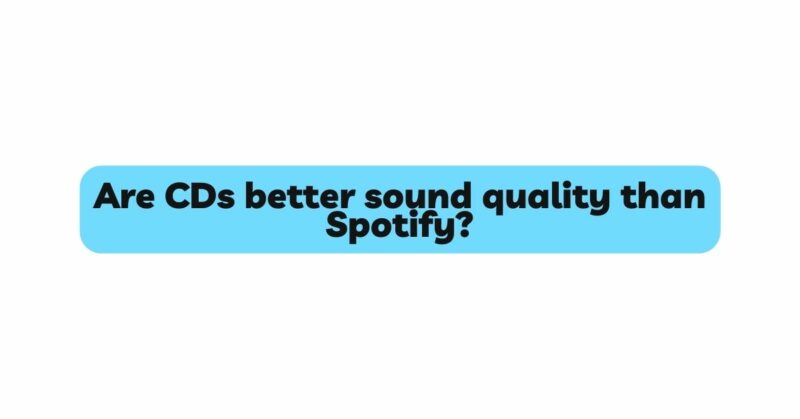In the contemporary landscape of music consumption, the choice between CDs and streaming platforms like Spotify has become a defining factor for audiophiles and music enthusiasts. Central to this debate is the question: Are CDs better in sound quality than Spotify? This inquiry delves into the realms of audio fidelity, digital streaming technology, human auditory perception, and the implications of choosing between these two platforms.
Decoding Audio Formats: CDs and Spotify
Before embarking on the exploration of sound quality, let’s decode the essence of CDs and Spotify:
- Compact Discs (CDs): CDs are a physical medium that store music in a digital format. They offer uncompressed audio, known as “Red Book” audio, and provide a reference point for sound quality.
- Spotify: Spotify is a popular music streaming platform that uses audio compression algorithms to deliver music over the internet. It offers convenience, a vast library, and various audio quality options, including “Normal,” “High,” and “Very High” quality settings.
The Complexity of Sound Quality
To navigate the intricacies of sound quality between CDs and Spotify, it’s crucial to understand the multifaceted factors that influence audio perception.
Factors Influencing Sound Quality
Several factors play a role in shaping the perception of sound quality between CDs and Spotify:
- Audio Compression: Spotify uses lossy compression algorithms to reduce file sizes and optimize streaming. This compression can result in the loss of some audio information.
- Bitrate and Quality Settings: Spotify’s audio quality settings allow users to choose different bitrates, affecting the balance between data compression and sound fidelity.
- Listening Environment: The acoustics of the listening space, background noise levels, and playback equipment influence how sound is perceived.
Scientific Exploration: Listening Tests
The pursuit of objective insights into the sound quality differences between CDs and Spotify has led to scientific experiments. Double-blind listening tests, designed to eliminate bias, have been employed to assess participants’ ability to perceive differences.
Varied Outcomes in Research
Research outcomes are varied and present a spectrum of findings. Some studies suggest that listeners can perceive differences between CD-quality audio and Spotify’s highest quality settings. However, these differences might be more pronounced when comparing extreme quality contrasts or in controlled listening environments.
Psychoacoustics and Expectation Bias
The field of psychoacoustics plays a significant role in understanding how humans perceive sound. Auditory masking, where louder sounds hide quieter ones, and the brain’s tendency to “fill in” missing audio information impact our perception of sound quality.
Expectation bias, influenced by preconceived beliefs, can also sway listeners’ judgments. If participants expect CDs to sound better, they might perceive differences, even if they are subtle.
Practical Implications and Listener Context
The question of whether CDs offer better sound quality than Spotify holds practical implications:
- Sound Purity: CDs, with their uncompressed audio, offer a purer representation of the original recording. This makes them a preferred choice for audiophiles and music purists.
- Streaming Convenience: Spotify’s convenience, vast library, and adaptive streaming technology make it a go-to choice for on-the-go listening and music discovery.
- Listening Environment: The impact of sound quality differences may vary based on the listening environment, equipment, and the listener’s familiarity with audio nuances.
Conclusion: The Harmony of Choice
The debate surrounding sound quality between CDs and Spotify resonates as a balance between technical fidelity and practicality. While scientific experiments offer insights into listeners’ perceptual capabilities, the practical implications encompass a dynamic interplay of technology, human auditory perception, and individual preferences.
Ultimately, the choice between CDs and Spotify transcends empirical analysis; it harmonizes technological evolution, music accessibility, and personal listening experiences. The question of sound quality is a symphony of auditory exploration, psychological influences, and the diverse melodies of sonic preference.


